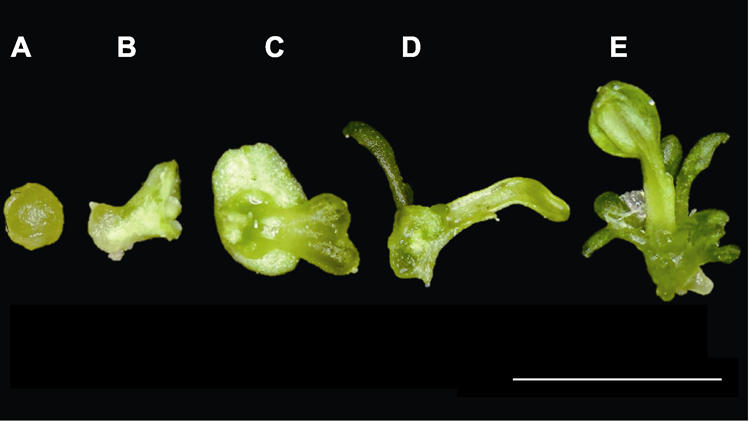INTRODUCTION: Viola × wittrockiana, a member of the Violaceae family, is recognized as a commercially valuable ornamental species due to its diverse flower colors and potential medicinal applications. However, its vegetative propagation via tissue culture has been limited by challenges such as low regeneration efficiency, procedural complexity in existing protocols, and genotype-dependent regeneration capacity. Previous attempts to establish regeneration systems for this species have been reported, but issues including inconsistent callus differentiation, low adventitious bud formation rates, and high dependency on explant quality remain unresolved. Consequently, the development of a stable and efficient regeneration system is considered critical for enabling biotechnological advancements, including genetic transformation and large-scale propagation of elite cultivars. A systematic approach focusing on genotype screening, explant selection, and optimization of plant growth regulator combinations is required to address these limitations and facilitate the species’ genetic improvement.
RATIONALE: Regeneration capacity in plants is highly influenced by genotype. This study aimed to optimize the regeneration system for V. × wittrockiana by screening eight cultivars and selecting petioles as superior explants due to their higher callus differentiation potential. Key factors, including plant growth regulators (2,4-D, KT, 6-BA) and carbohydrate sources (sucrose, maltose, trehalose), were systematically evaluated. Repeated induction cycles were employed to enrich high-regeneration genotypes, enhancing overall efficiency and reproducibility.
RESULTS: Petioles were identified as superior explants, exhibiting a significantly higher callus induction rate (91.90%) compared to leaves (49.65%) across eight V. × wittrockiana cultivars, with the highest differentiation efficiency (15.83%) observed in the PXP cultivar. The optimal callus induction medium was determined to be 1/2MS (sugar-free) supplemented with 30 g∙L-1 sucrose, 1.5 mg∙L-1 2,4-D, and 1.5 mg∙L-1 KT, achieving a differentiation rate of 18.52%. For adventitious bud induction, the highest regeneration efficiency (67.33±3.06)% was obtained through repeated induction cycles using 1/2MS (sugar-free) containing 30 g∙L-1 trehalose, 0.05 mg∙L-1 2,4-D, and 3 mg∙L-1 6-BA. Proliferation of adventitious buds was maximized on MS (sugar-free) medium with 30 g∙L-1 trehalose, 0.5 mg∙L-1 2,4-D, and 1 mg∙L-1 6-BA, yielding a proliferation coefficient of 3.29±0.22. Rooting of regenerated shoots was successfully achieved (84.44±6.93)% on 1/2MS medium containing 0.1 mg∙L-1 NAA, followed by acclimatization with a survival rate exceeding 85%, validating the efficacy of the established regeneration protocol.
CONCLUSION: This study established a petiole-based high-efficiency regeneration system for V. × wittrockiana through genotype screening, media optimization, and repeated induction of high-regeneration genotypes. The protocol significantly improved adventitious bud differentiation rates (67.33%), addressing long-standing challenges in regeneration of this species. The system provides a robust technical foundation for genetic transformation, gene function studies, and large-scale propagation, thereby facilitating the commercial development and biotechnological advancement of this economically valuable species.

Observation of somatic embryo developmental stages during pansy regeneration. (A) Spherical embryo; (B) Heart-shaped embryo; (C) Torpedo-shaped embryo; (D) Cotyledon embryo; (E) Mature adventitious bud. Bar=1 cm

 Table of Content
Table of Content
 Home
Home